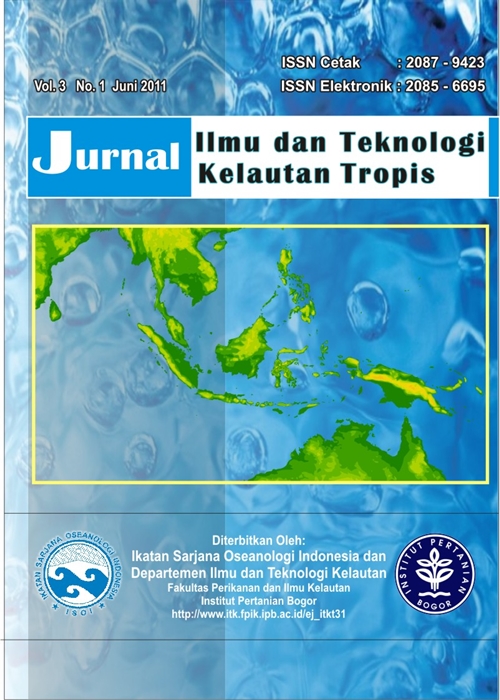SKIPJACK TUNA IN RELATION TO SEA SURFACE TEMPERATURE AND CHLOROPHYLL-A CONCENTRATION OF BONE BAY USING REMOTELY SENSED SATELLITE DATA
Abstract
Skipjack tuna is an important species targeting by pole and line fishery in Bone Bay. The distribution and abundance of this species tended to aggregate to the preferred bio-physical environments. To describe the short term relationship between skipjack tuna and oceanographic conditions and to visualize the predicted high catch areas, remotely sensed satellite based-oceanographic sea surface temperature (SST) and chlorophyll-a together fisheries data were used. Results indicated that the highest skipjack CPUEs were mainly found in coastal areas of Palopo and Kolaka both in 2007 and in 2009 during the period of study. The high tuna concentrations corresponded well with chlorophyll-a of 0.15-0.40 mg mg-3 and SST of 29.0-31.5 °C. The preferred ranges provide a good indicator for initially detecting potential skipjack fishing grounds. This study suggested that thermal and chlorophyll fronts as well as upwelling may important mechanisms in explaining the temporal and spatial dynamics of skipjack tuna distribution and abundance in Bone Bay.
Keywords: skipjack tuna, potential fishing grounds, satellite images and fronts
Downloads
The author submitting the manuscript must understand and agree that the copyright of the article manuscript must be submitted/transferred to the Jurnal Ilmu dan Teknologi Kelautan Tropis. This work is licensed under the Creative Commons Attribution-ShareAlike 4.0 (CC BY-SA) International License in which the Author and Reader can copy and redistribute the material in any media or format, and remix, modify and build material for any purpose, but they must provide appropriate credit (citing articles or content), provide a link to the license, and indicate whether there is a change. If you mix, change, or create material, you must distribute your contribution under the same license as the original.



.png)














